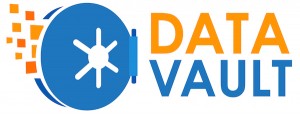Following on from the Jisc Research Data Spring the universities of Manchester and Edinburgh have been continuing to develop DataVault. Both institutions are currently planning local implementations, whilst working together to continue develop the software.
On 28th March, the project team met in Edinburgh to discuss their implementations and tasks for the next couple of months.
Tasks on the DataVault development list:
– BagIt Libraries, resolve issues with BagIt libraries: removing empty directories, renaming files, creating manifests in memory
– Stand alone packager, to package deposits external to the DataVault web application
– Verification of deposits, e.g. checking that the number of files and filesizes are correct
– Deposits via API, for browser upload, requires further investigation into authentication and chunking of files
– User Roles/Groups/Sharing Archives, definitions of roles and implementation within the DataVault
– Closing Vaults, in what circumstances are vaults closed?
– Integrations with Pure and Dropbox
We will also be moving our documentation and issue tracking into the DataVault GitHub repository https://github.com/DataVault/datavault




